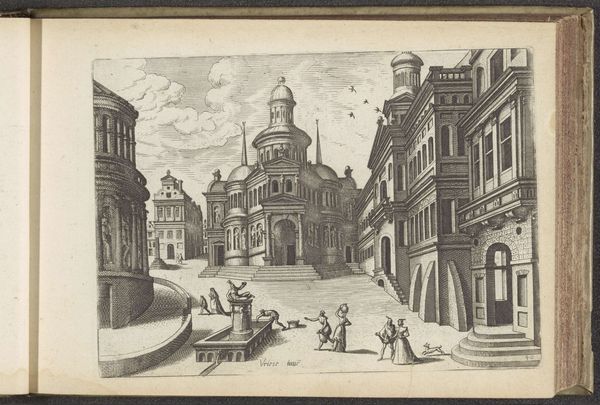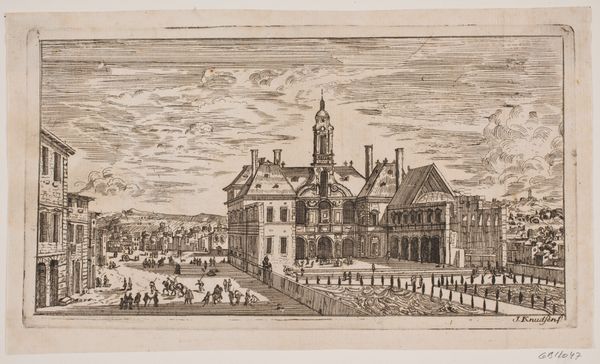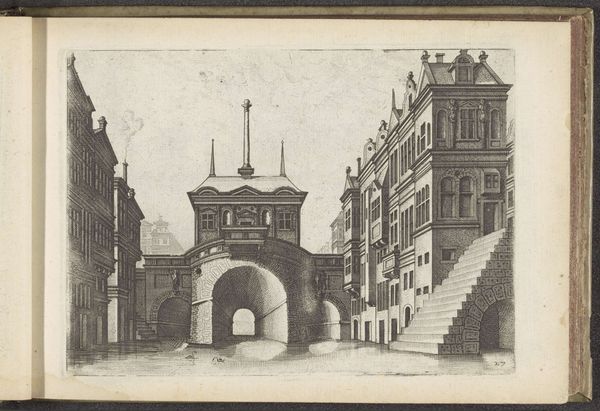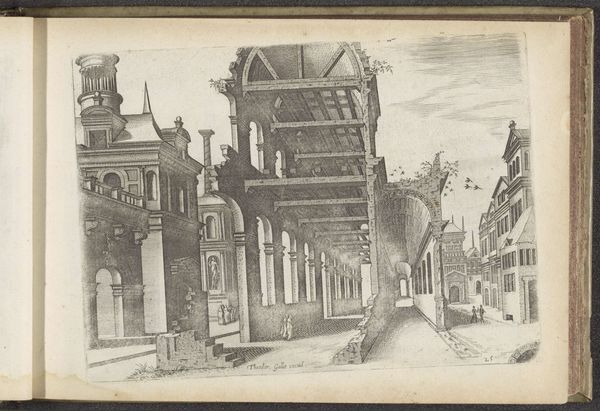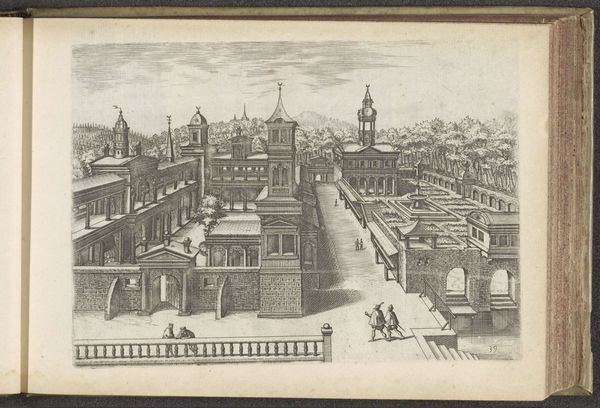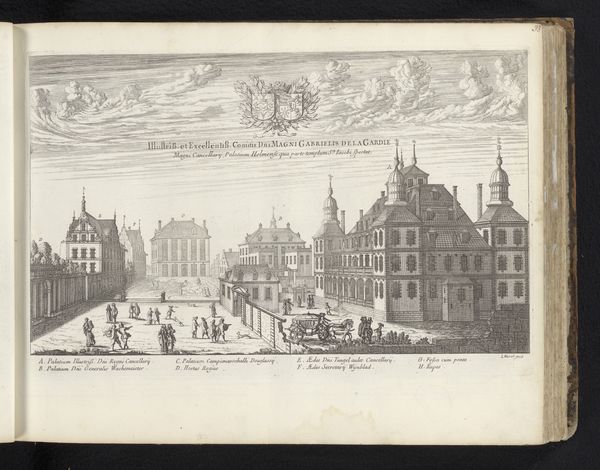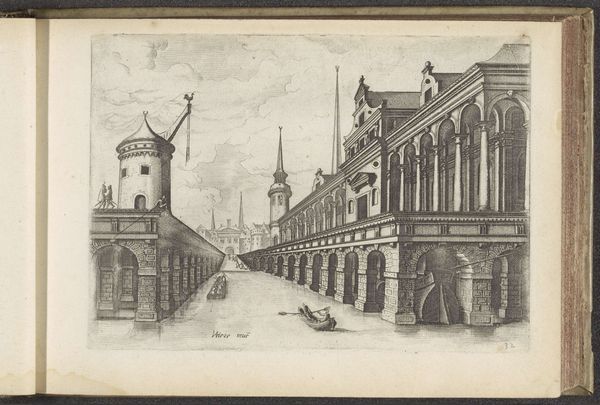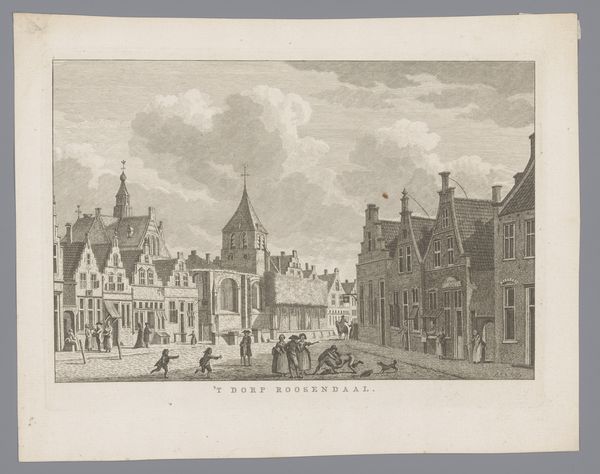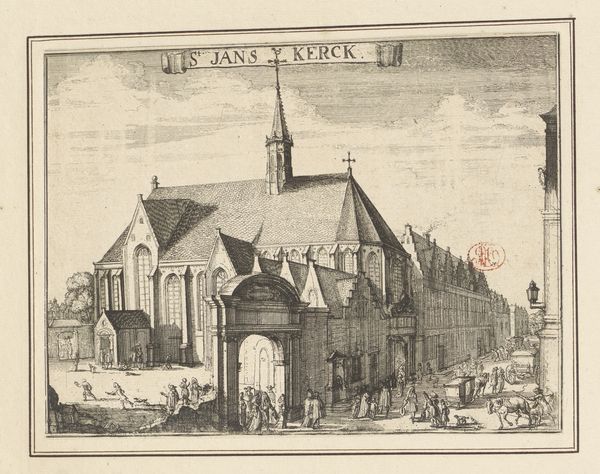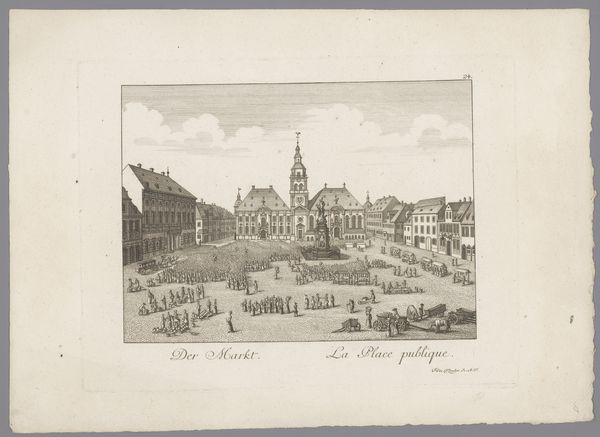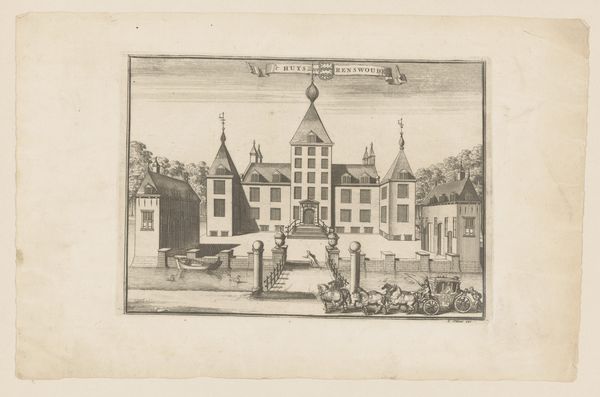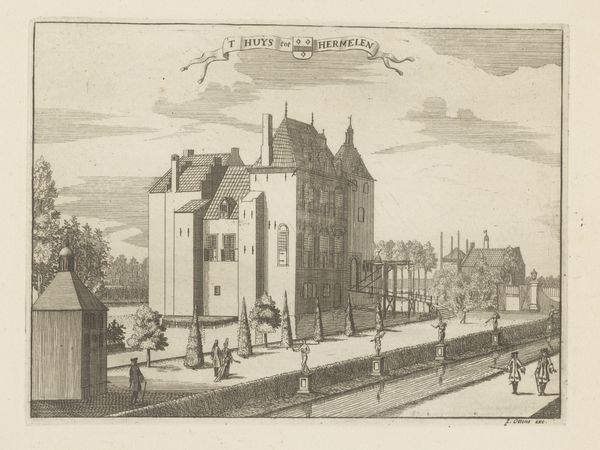
print, engraving
#
dutch-golden-age
# print
#
cityscape
#
history-painting
#
engraving
Dimensions: height 156 mm, width 213 mm
Copyright: Rijks Museum: Open Domain
This is a print of a water gate of a walled city, made by Johannes or Lucas van Doetechum. The image gains much of its effect from the fine parallel lines that describe the scene. The process of making the print would have begun with a metal plate, likely copper. Using a tool called a burin, the artist would have painstakingly incised the lines directly into the metal. This required considerable skill and time. The plate would then be inked, and the surface wiped clean, leaving ink only in the engraved lines. Finally, paper was pressed firmly against the plate, transferring the image. Prints like this were important for disseminating images widely in early modern Europe. They were a form of mass production, and the images produced in this way were often used as sources for other artworks. So, while the individual print may seem modest, it played a crucial role in the broader economy of visual culture. It reminds us that even seemingly "fine" art depends on processes of labor and distribution.
Comments
No comments
Be the first to comment and join the conversation on the ultimate creative platform.

